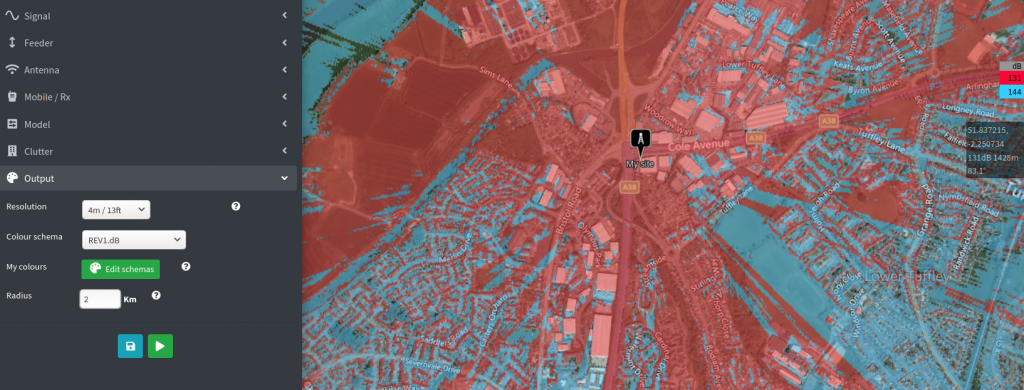How Can We Help?
Modelling the reverse link
A common problem when faced with a bi-directional link between a base station and remote nodes is modelling the reverse link eg. node to base station. Doing this economically is possible with a little extra preparation and path loss, not received power.
In cellular networks this is the uplink (Handset to tower) which has been explored previously using some whiteboard theory.
Scenario 1: IoT gateway
In this setup the gateway has an RF power output of 27dBm and the node is less at 14dBm. The gateway has a 3dBi antenna and the node has a 2dBi antenna fitted fitted so their EIRP is 30 and 16dBm respectively.
The system uses QPSK modulation which is known to have a required SNR level of 4dB. If the noise floor is -120dBm then the absolute threshold is -116dBm. Deduct 4dB for receiver noise for a threshold of -112dBm.
Maximum acceptable path loss (MAPL) calculations
Pre-compute the maximum path loss for each direction to identify the two path loss values for use as thresholds. Typically the weaker uplink will be several dB less (~90%) than the more powerful downlink. If it’s significantly less your bi-directional network isn’t very efficient.
The antenna gain of 2dBi features twice for the receive and transmit
Downlink = 27dBm + 3dBi + 120dBm + 2dBi – 4dB – 4dB = 144dB
Uplink = 14dBm + 2dBi + 120dBm + 3dBi – 4dB – 4dB = 131dB (eg. 91% of downlink)
Putting it into the interface
To model this network in one go, set the transmitter location to the gateway, with gateway parameters (RF power 27dBm, antenna gain 3dBi etc).
Set the receiver(s) to 2dBi gain with measured units as Path loss (dB). For sensitivity
use the downlink path loss value of 144dB.


Create a custom colour key from the “Edit schemas” link and call it reverse. Set the top value to your uplink path loss of 131dB.
Set the steps to 2 and the step size to 13dB. Notice the next value is now your downlink path loss of 144dB.
Save this and re-load your interface.



Summary
With a little extra preparation, you can economically model the uplink of n nodes in a network to a known gateway with a single API call. By putting this into the API you can repeat this process for all gateways in a region and download results as shapefiles for correlation with other data sets, like population data for example.

